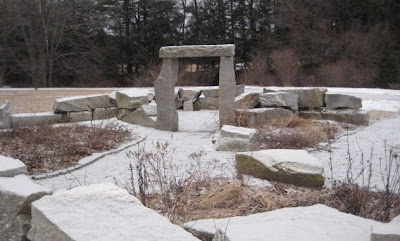
Hans is an amateur gardener who lives in Boden, Norrbotten, Sweden with his wife and three children. His blog chronicles his "little garden" where he likes to try different plants to see if they can survive in the harsh conditions of his Zone 4 garden. The first plants he experimented with were from the forgotten garden marshlands next to his village, Svanå, where his blog it its name.
Interestingly enough, Hans selected gardening blogs for the Liebster Blog Award from countries that don't even speak Swedish. I would like to accept Hans' challenge and recommend five blogs, from both far and near, that I find intriguing:
James Golden at View from Federal Twist James eloquently writes about his two gardens, one is large garden in western New Jersey, called Federal Twist, and other is a small urban garden in Brooklyn. Federal Twist is an established 'New American' garden and has a diverse selection of prairie plants. The Brooklyn garden is a work in progress and looks like it will have a modern bent to it.
Jordan Jackson at Metropolitan Gardens: Gardening in Cascadia . Jordan is a professional landscape designer, and has a Zone 8 garden, called the Cascadia Garden, in Seatle, WA. His blog provides information about gardening in northwestern United States. He puts together an excellent list of 'plants of interest' in his garden each month.
Faisal Grant at Gardener in the Distance . Faisal is a garden-maker from Melbourne, Victoria, Australia. He is also a poet and it is not uncommon to find his poetry in posts on his blog. I always enjoy finding out what is happening in the southern hemisphere each season.
Joe Valentine at Juniper Hill. Joe is a gardening friend of mine from here in New Hampshire. He has two acres of ornamental and vegetable gardens at Juniper Hill Farm, the 18th century farmstead he shares with his partner-in-life, Paula. He is a bit of a boxwood aficionado and his blog often features guest bloggers from our area.
David Marsden at The Anxious Gardener. David is a professional gardener working in East Sussex, England. He has been blogging about the two gardens he works on for about a year. His blog is always full of both humor and useful information.
The rules to accepting the Liebster Blog Award are:
• Thank your Liebster Blog Award presenter on your blog.
• Link back to the blogger who presented the award to you.
• Copy and paste the blog award on your blog.
• Present the Liebster Blog Award to 5 blogs of 200 followers or less who you feel deserve to be noticed.
• Let them know they have been chosen by leaving a comment at their blog.







































